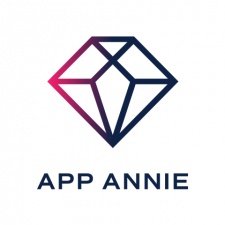The appetite from consumers to pay to play is clear, but with a booming market comes increased competition and an increasingly challenging environment.
The app market is one of the most competitive spaces in the world, with approximately 2 million iOS App Store apps and 4 million Google Play Store apps. Between the sheer number of apps and the skyrocketing costs of advertising, successfully acquiring and retaining users is more challenging than ever.
However, it pays to get it right. Mobile has led worldwide consumer spending on games since 2014 and has yet to cease widening the gap. In fact, mobile gaming extended its global lead to 2.1x PC/Mac gaming and 2.8x home game consoles in 2018, driven by both an increase in users and spend per user.
While mobile gaming eats into console market share, the app economy itself continues to grow. Global consumer spend from iOS and Google Play combined is expected to hit $105 billion* in 2020, compared to $90 billion expected for 2019. Subscription services will drive much of this growth, with games being the newest vertical to capitalize on this monetization trend.
According to Apple, 65% of app downloads come through organic searches on the iOS App Store. A highly valuable strategy to increase long-term exposure is App Store Optimization. App Store Optimization, or ASO, can be defined as the ongoing process of testing and measuring updates to app store marketing assets, with the goal of increasing visibility and driving more downloads.
ASO is the product of two distinct goals: 1) discoverability — increasing search traffic to your app and 2) conversion — convincing users to download your app.
For many app publishers, the first thing that comes to mind when they think about ASO is building out a keyword strategy. While optimizing an app for organic discoverability goes well beyond keywords, it’s the first place to start and this process too goes well beyond the obvious keywords you would identify with your app.
Defense Play Strategy
ASO, like SEO, follows a similar strategy in outline. For example, terms like Paid Search and Keyword Defense rely on similar mechanics, and are vital components. Specifically, regarding organic and paid keywords, Paid Search data is a key component of a well-rounded app store optimization strategy.
But are competitors disrupting your organic strategy? Are they stealing your thunder, bidding for your highest performing keywords? Are they appearing at the top organic search results for your branded terms? Answering these questions requires a deep dive into the data.
First, app professionals must recognize the need to understand competitor data. Second, they need a deep understanding of their paid and organic keywords. Paid campaigns have a ripple effect that significantly impacts organic keyword rankings. With this combination of data and insights, app professionals can lower customer acquisition costs and make a bigger impact in the $187 billion mobile ad market.
KeyWord Defense protects your keywords by understanding which of your keywords are:
- Safe: you are bidding on these keywords and have the highest share of voice. A marketer does not need to take action.
- Revealed: no apps are bidding on these keywords. This is a potential untapped opportunity. a market may adapt organic strategies using these keywords.
- Threatened: you are bidding on these keywords but you don’t have the highest share of voice. It’s time to decide whether or not these words are valuable and consider boosting spend.
- Critical: you are not bidding on these keywords
Offensive Play Strategy
Paid Search capabilities uncover competitor strategies and improve your own. App Annie’s Paid Search metrics enable publishers to:
- Gain a complete list of which competitors are running Apple Search Ads and Google AdWords.
- Drill down by country and region to see where your competitors are running ads.
- Uncover all of the keywords competitors are bidding on.
On Google Play in the US, Spotify has optimized for the keyword “podcasts” — a key part of its demonstrated strategy to branch out to other types of content from music streaming.
Dosh, a cash-back app, saw phenomenal growth in iPhone downloads in November 2018 in the US. At the beginning of November 2018, Dosh incorporated the keyword “coupon” into its keyword strategy and jumped 15 ranks. Throughout the lead-up to Black Friday 2018, Dosh broke into the top 10 for the keyword, beating other shopping apps in the top 5 by iPhone downloads.
Getting seen on the App Store is the first hurdle; converting to download is largely dependent on the first impression you make. That first impression is driven by creative elements.
From the best app icon to use across each App Store to the 6 screenshots you choose to preview, every step takes continual creative and analytical review. Understanding the type of content that has the best success rate is paramount to maximising on the efforts made with offensive and defensive keyword strategies.
*excluding third-party Android stores





















